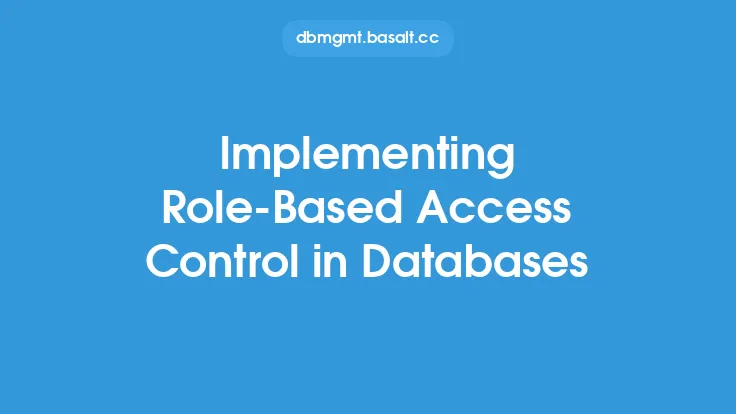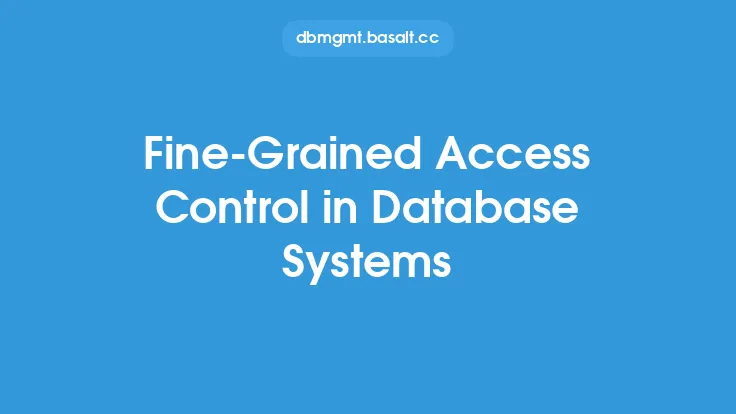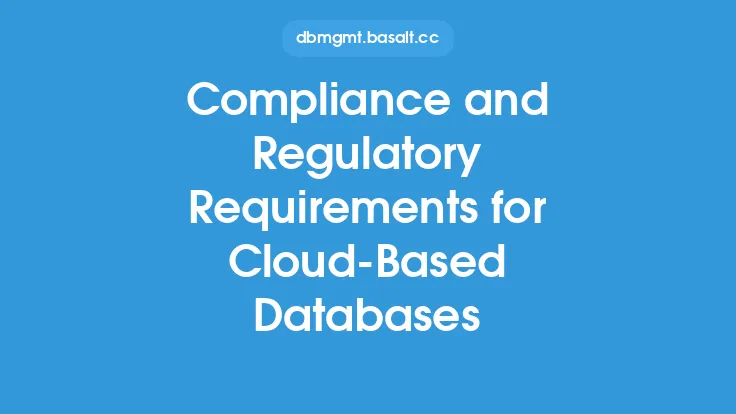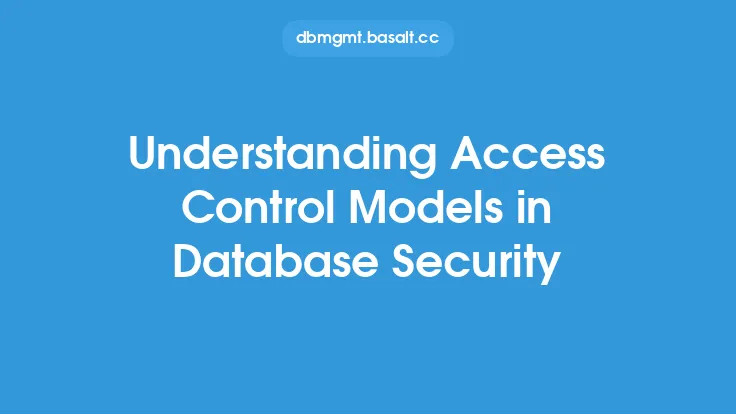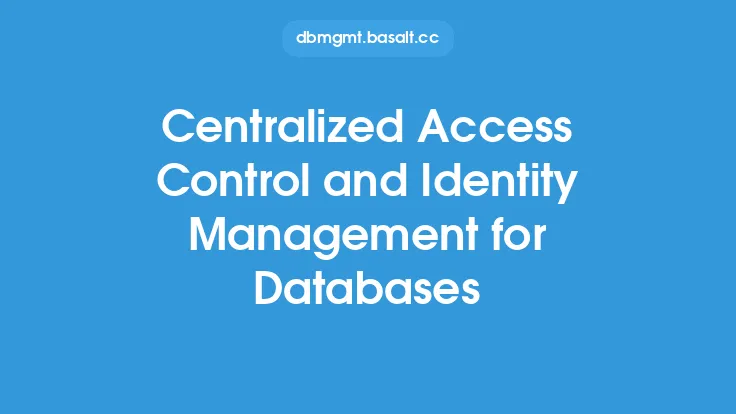Role-Based Access Control (RBAC) is a security approach that restricts system access to authorized users based on their roles within an organization. In the context of databases, RBAC is used to control access to data and database operations, ensuring that users can only perform actions that are necessary for their job functions. This approach helps to prevent unauthorized access, data breaches, and other security threats.
Introduction to Role-Based Access Control
RBAC is based on the principle of least privilege, which states that users should only have the minimum levels of access necessary to perform their jobs. This approach is more secure and efficient than traditional access control methods, which often rely on user-level permissions and access control lists. With RBAC, access control is based on the roles that users play within an organization, rather than their individual identities. This makes it easier to manage access control, as roles can be defined and assigned to users based on their job functions.
Key Components of Role-Based Access Control
There are three key components of RBAC: roles, permissions, and users. Roles are defined based on the job functions and responsibilities within an organization. Permissions are the access rights that are assigned to each role, and users are assigned to roles based on their job functions. The key components of RBAC work together to provide a secure and efficient access control system. Roles are used to define the access rights and permissions that are required for each job function, and users are assigned to roles based on their job functions. Permissions are then assigned to roles, rather than individual users, making it easier to manage access control.
Principles of Role-Based Access Control
The principles of RBAC are based on the concept of least privilege, which states that users should only have the minimum levels of access necessary to perform their jobs. There are several principles of RBAC, including role definition, role assignment, permission assignment, and role hierarchy. Role definition involves defining the roles that are required within an organization, based on the job functions and responsibilities. Role assignment involves assigning users to roles, based on their job functions. Permission assignment involves assigning permissions to roles, rather than individual users. Role hierarchy involves defining a hierarchy of roles, with more senior roles having more access rights and permissions.
Implementation of Role-Based Access Control in Databases
The implementation of RBAC in databases involves several steps, including defining roles, assigning users to roles, and assigning permissions to roles. The first step is to define the roles that are required within an organization, based on the job functions and responsibilities. The next step is to assign users to roles, based on their job functions. The final step is to assign permissions to roles, rather than individual users. This can be done using a variety of methods, including role-based access control systems, access control lists, and database security software.
Benefits of Role-Based Access Control in Databases
The benefits of RBAC in databases include improved security, increased efficiency, and reduced administrative costs. RBAC helps to prevent unauthorized access, data breaches, and other security threats, by ensuring that users can only perform actions that are necessary for their job functions. RBAC also makes it easier to manage access control, as roles can be defined and assigned to users based on their job functions. This reduces the administrative costs associated with managing access control, as roles can be easily updated and changed as needed.
Best Practices for Implementing Role-Based Access Control in Databases
There are several best practices for implementing RBAC in databases, including defining roles carefully, assigning users to roles based on their job functions, and regularly reviewing and updating roles and permissions. Roles should be defined carefully, based on the job functions and responsibilities within an organization. Users should be assigned to roles based on their job functions, and permissions should be assigned to roles, rather than individual users. Roles and permissions should be regularly reviewed and updated, to ensure that they remain relevant and effective.
Common Challenges and Limitations of Role-Based Access Control in Databases
There are several common challenges and limitations of RBAC in databases, including the complexity of defining roles, the difficulty of assigning users to roles, and the need for regular review and updates. Defining roles can be complex, as it requires a deep understanding of the job functions and responsibilities within an organization. Assigning users to roles can also be difficult, as it requires a thorough understanding of each user's job function and responsibilities. Roles and permissions must be regularly reviewed and updated, to ensure that they remain relevant and effective.
Future of Role-Based Access Control in Databases
The future of RBAC in databases is likely to involve the use of advanced technologies, such as artificial intelligence and machine learning, to improve the efficiency and effectiveness of access control. These technologies can be used to automate the process of defining roles and assigning users to roles, and to improve the accuracy and relevance of roles and permissions. They can also be used to detect and prevent security threats, such as unauthorized access and data breaches. As databases continue to play a critical role in the storage and management of sensitive data, the use of RBAC is likely to become even more important, as a means of ensuring the security and integrity of that data.
